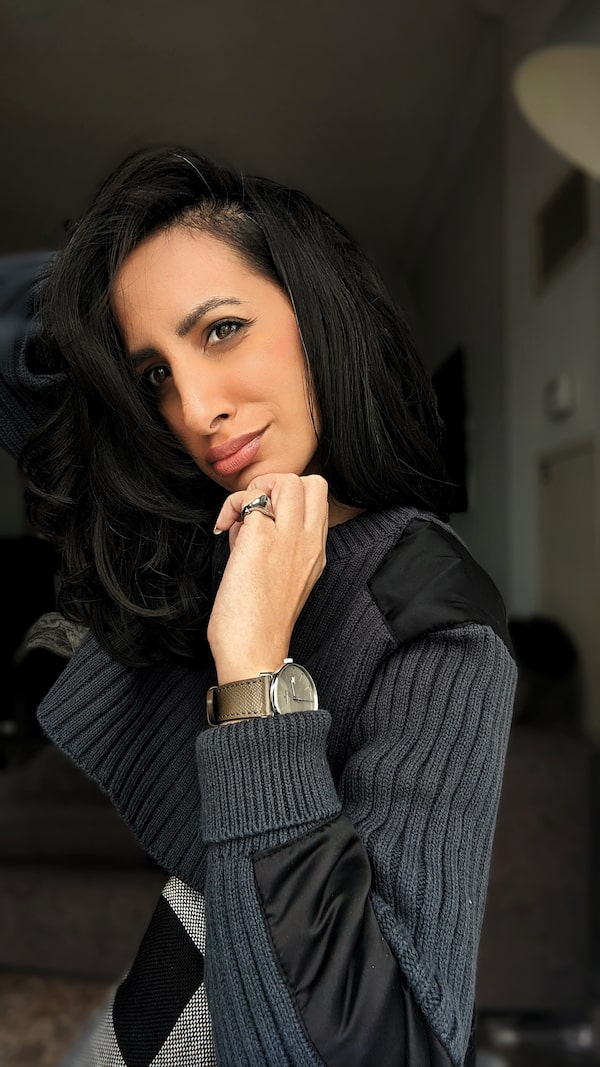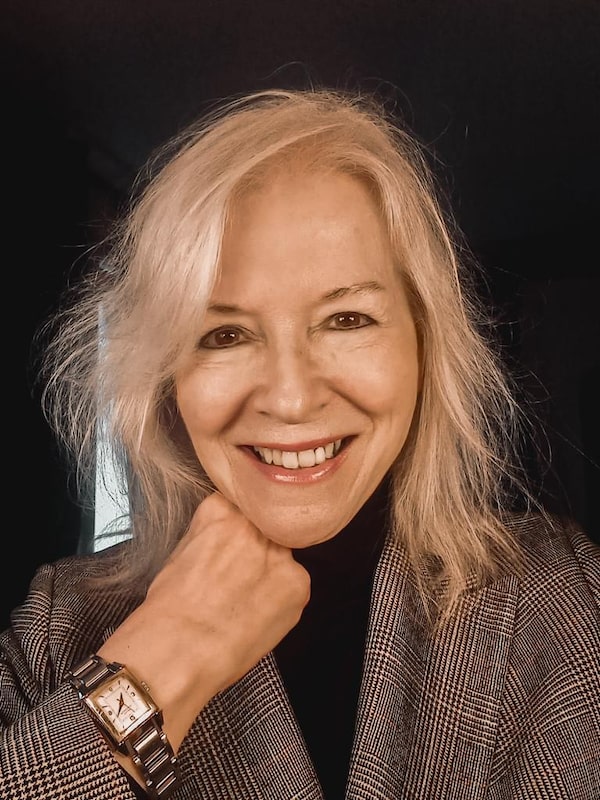Nahid Virani. a Toronto-based watch enthusiast and collector, began posting on Instagram under the handle @viranimansion during the pandemic.Handout
The most sought-after men’s watches are mechanical marvels that can do everything from tell the time in multiple locations to display the phases of the moon.
For women, however, the watch industry has traditionally tended to deliver dainty and bedazzled quartz-powered imitations of men’s timepieces – even though watch enthusiasts prize mechanical watches over quartz because of the craftsmanship required to create them. Think of the souped-up engine of a Formula 1 car versus that of a sturdy but unspectacular Honda Civic.
It’s not just the “shrinking and pinking” of the watches themselves, but also the industry’s marketing, which has largely targeted men.
Yet women have always worn and collected watches, those intended for both genders. In the past few years, the boys’ club attitude in the collector community has refreshingly begun to shift, thanks in large part to the influence of social media. And the industry is taking notice, with more brands targeting women through collaborations with female designers.
This makes good business sense. As Ginny Wright, chief executive of Audemars Piguet Americas, told the Financial Times, the proportion of women buying watches for themselves from the luxury maker rose from 16 per cent in 2021 to 23 per cent in 2022, and is projected to reach 30 per cent by 2025.
While watch-collecting groups are still dominated by men, women have found a welcoming space to talk watches on social platforms. On Instagram, female collectors post wrist shots of their watches, which in turn has inspired others to get into watch collecting. Some of the most popular accounts are @watch_femme, which boasts that it is “dedicated to promoting and strengthening women’s voices within the watch world,” and @dimepiece, billing itself as “a female-forward resource for anyone who might be into watches.”

Nahid Virani.Handout
Individuals are behind some popular accounts, too. Nahid Virani, a Toronto-based watch enthusiast and collector, began posting on Instagram under the handle @viranimansion during the pandemic as a way to connect with other aficionados. She has amassed more than 2,500 followers – even getting the attention of industry players.
And it’s not just women who are watching these accounts. As more women post pictures of their favourite timepieces, interest is building in smaller but horologically significant watches. In recent years, stars such as Lionel Messi and Bad Bunny have been spotted wearing under 38 mm-sized, gem-studded Patek Philippes (men’s watches usually clock in at 38 mm to 46 mm). Timothée Chalamet has walked the red carpet in a tiny Cartier Panthère, and the Weeknd wore a 32 mm Piaget High Jewellery watch to Cannes.
Journalist Victoria Townsend, a collector herself, has interviewed countless players in the watch world. In an industry dominated by male CEOs, designers, makers and more, the Paris-based, Ontario-born-and-raised Townsend is quick to give recognition to brands that have historically listened to female voices.

Victoria Townsend, photographed in 2010, wears a Girard-Perregaux Vintage 1945 Lady.Handout
Breguet has been making women’s watches since the 1700s. Omega pioneered the Pulsometer for nurse’s watches. Rolex and Longines were early champions of female brand ambassadors. The original Rolex Testimonee, back in 1927, was endurance swimmer Mercedes Gleitze. And aviator Amelia Earhart crossed the Atlantic in 1932 wearing a Longines.
Still, Townsend says, women have had to make more of an effort to get information on timepieces than men. Many have told her that they’ll be waltzed directly to the “ladies” collections when they enter a watch boutique. And, for example, in women’s fashion magazines, stylists rarely accessorize models with wristwatches. Women like Virani posting wrist shots on Instagram and TikTok help to fill that gap.
The major watch brands have been stepping up their initiatives focused on women with collaborations with female designers. For example, Bulgari recently revealed a second collaboration with K-pop superstar Lisa from Blackpink – a diamond-studded steel and gold Bulgari Bulgari watch with a tasteful tile-patterned face.
Couturier and Ralph & Russo co-founder Tamara Ralph created the opulent Royal Oak Concept watch with a multidimensional dial built with brown, bronze, pink and yellow gold-toned layers. Its exhibition case back reveals the mechanism that powers both a flying tourbillon (one of the most intriguing inventions in horology, these gears and springs are designed to offset gravity) and a GMT function (which allows the wearer to tell the time anywhere in the world).
Fashion designer and girl-power pioneer Victoria Beckham partnered with Breitling on a limited-edition series for its Chronomat Automatic 36 with face colours that complement the British designer’s eponymous spring/summer 2024 collection. The Chronomat is one of the brand’s most popular models and is powered by a superprecise and self-winding movement, which, unlike a quartz watch, doesn’t need a battery to function.
Georges Kern, CEO of Breitling, with Victoria Beckham.Handout
Women also appreciate choice. This time-and-date model features a sporty-but-elegant bracelet with options of bold blue or green or more subdued Champagne dials.
The collaboration with Beckham helped the Breitling tap “into the world of fashion, something not every watch brand could do. Her relevance within the fashion industry enables us to speak to fashion-savvy women, while simultaneously reaching a broader female audience,” says the company’s CEO George Kern.
While brands play catch up to what women want, maybe they’d be wise to heed the words of Suzanne Wong, co-founder of Watch Femme. “What is a woman’s watch? It is a watch owned by a woman. I don’t see any clearer way to put that.”